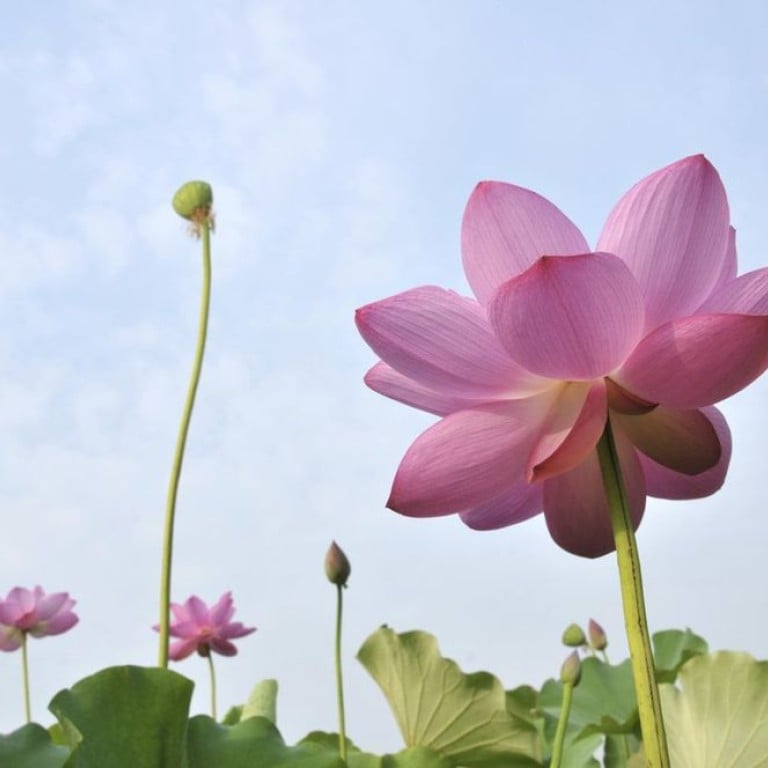
City of the lotus flower
In a sense, adoption of a floral emblem is regarded as a return to pre-European imagery
One evening near the end of December 1999, I was walking with a group of friends on Taipa Island in Macau. The city’s return to China was hours away and we were deciding what to do before the midnight handover. One of our party spied a Portuguese coat of arms, one of many flying on pennants along the roadside, and quickly climbed onto a fence to claim it as a souvenir – just as two police officers drove past. They saw us, but didn’t stop. Those colonial emblems wouldn’t be there much longer anyway.
Later that night, we watched a fireworks display over the Outer Harbour. The next morning, every street in the city was decked out with the new flag of the Macau Special Administrative Region.
The idea for a separate Macau flag was novel. Prior to 1999, only the green-and-red flag of Portugal was used in the territory. All flags have some meaning. What about this one?
Following Hong Kong’s example, which uses the bauhinia, a floral emblem was chosen – in this case the water-loving lotus plant found throughout China. And similar to the Hong Kong flag, the Macau banner also incorporates the five stars of the national flag in its design.

One feature is easily overlooked: below the three lotus petals, there’s the stylised shape of the Governor Nobre de Carvalho Bridge – better known as the Macau-Taipa Bridge, the long crossing with the triangular arch in the middle which has connected the peninsula with the island since 1974. It was one of the longest sea bridges in the world when it was opened, and it has been a landmark ever since. Below that, four lines of water represent the home of the lotus but also Macau’s history as a port.
Competing designs were proposed using other recognised images of the city – the ruins of St Paul’s and the ancient Guia lighthouse, for instance – but the flower won the day. Why the lotus in particular?
“In Chinese texts and travel accounts from very early on, Macao peninsula was seen to be in the general shape of a lotus flower and its stem,” says historian Jason Wordie, author of Macao: People and Places, Past and Present, “so in that sense it was regarded as a return to pre-European imagery.”
Wordie points out that floral emblems are politically neutral, and therefore more inclusive. Following the handover, the Grand Medal of Lotus Flower was established as the highest award in a new local honours system.

Look around and you’ll notice the theme all over Macau. The bronze statue of Kun Iam (Kwun Yam, the goddess of mercy) on the waterfront, especially striking when lit at night, is built on a base shaped like a lotus flower. An ecumenical centre below the statue hands out information about Buddhism, which has long used the lotus as a symbol of enlightenment. Elsewhere, there’s a Lotus Square with a large sculpture called “Lotus Flower in Full Bloom” which represents perpetual prosperity for the whole city.
If you’re inspired by this and want to check out other lotus-themed sights around Macau, this is the time for it – June is the time for the annual Macau Lotus Flower Festival, which is in its 15th year. Held from June 13 until the end of the month, a different kind of lotus flower is highlighted each year and the focus is on Nelumbo nucifera cv. (or “三水佳麗” - Sanshui Jiali) this year. Themed activities, such as a floral design and photo exhibition, eco-tours and workshops on lantern design, clay modelling and hand-painted fan, showcase the beauty of the city’s floral emblem and during this time the major parks, tourist attractions and street-side green areas are filled with lotus flowers in full blossom. You’ll be able to see the graceful blooms on many streets around town, but it’s a good idea to head to any of three places: the Taipa Houses-Museum, which shows off traditional Macanese architecture year-round; the Lin Fung Temple, dating from 1592, with its frieze of dragons and lotus-filled pond; or the popular Lou Lim Ieoc Garden.

This last venue is modelled on the famous Chinese classical gardens of Suzhou and was built by 19th-century merchant Lou Kau. In 1906 it passed to his son Lou Lim Ieoc, who let it become an overgrown ruin, but it was eventually restored and opened to the public. Narrow paths wind through screens of bamboo to a large pond filled with carp and lotus flowers. A traditional nine-turn bridge carves its way across the pond to a picturesque pavilion. The walled garden will be full of flowers for the summer.
The festival is not just a feast for the eyes. Lotus-themed cuisine, much of it vegetarian in keeping with its Buddhist connections, will be served in Chinese restaurants around Macau.
